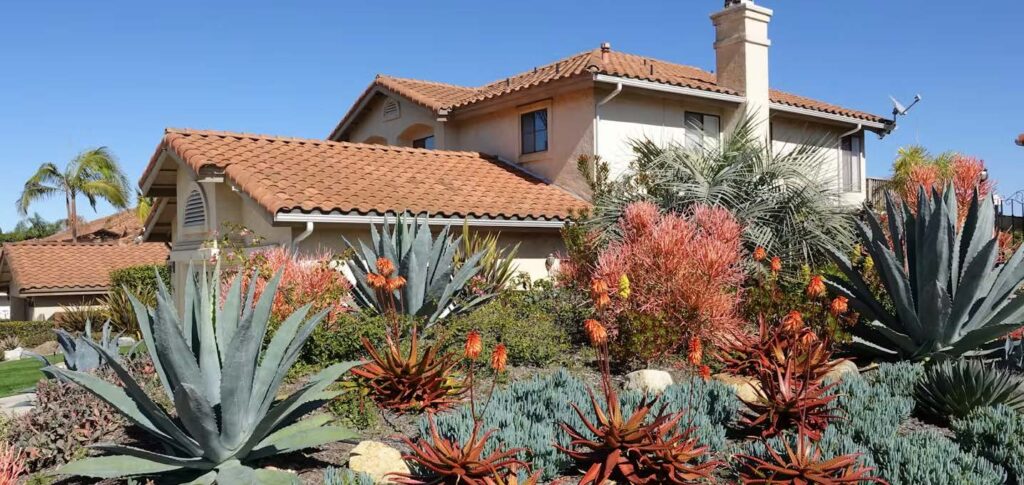In drier climates, some people ditch the grass and get creative with other natural elements. Find out ways to save on water and spruce up your home’s outdoor space.
Nurturing a luscious lawn can be a difficult task, especially for those who live in dry climates.
According to the U.S. Environmental Protection Agency, the average American family uses 320 gallons of water per day – and 30% of that goes outdoors, for purposes like watering the lawn. Many homes in the nation’s driest climates – especially in the Southwest – devote 60% of their household’s water usage to outdoor purposes.
Although arid environments provide harsh conditions for a vast array of flora and fauna, many desert-area communities have strict limitations on using water for landscaping purposes. That’s one reason for the popularity of xeriscaping, an artful landscaping design requiring significantly less water usage than a traditional lawn.
Looking for a lower-maintenance option for your yard? Here are a few steps to consider.
1. Make a plan
Each and every outdoor space looks different. Assess your yard’s needs and determine the best plan for transitioning to a less-water-dependent environment. Some homeowners choose to xeriscape a full front yard or back yard, while others opt for keeping partial grass and repurposing select spaces, like garden beds.
Tip: Observe how the sun moves across your yard throughout the day, taking note of places that receive the most natural light. This can help determine where certain plant species may thrive better than others when you arrange the new elements in your yard.
Planning in advance can also dictate where to group specific plants together depending on their water usage needs. Though xeriscaping requires less water than grass, the plants you choose will likely still need semi-regular watering depending on their unique parameters.
2. Choose resilient plants
It’s essential to find plants that survive in xeric conditions. Cacti and succulents are popular picks – with hundreds of yard-friendly options to choose from.
One way to cover vast areas of yard is with ground cover plants, which are short in stature but quick to sprawl across an open space. Plenty of these plants, like those in the phlox family, are known for blooming vibrant flowers in shades of pink, purple, blue, and yellow. Other popular options include dianthus, creeping thyme, and star creeper, just to name a few. Many ground plants still need regular watering (especially during prolonged dry spells), but far less than traditional grass.
And, speaking of flowers, a sampling of popular desert-dwelling bloom variants include coneflower, lavender, tickseed, and some types of poppy (among many others). Not only do flowers like these require little water compared to wet-climate alternatives, but they also can add splashes of vibrant color to any outdoor space. Plus, these blooms – along with countless others born to thrive in dry places – are perennial, meaning they grow back each year and won’t need to be re-planted.
Head to a local gardening center and ask what plants and flowers are native to your area. Not only might some of these be great choices for your xeriscaping journey since they’re built to last in your area, but you may also find some that can benefit members of the local ecosystem, like butterflies, pollinating bees and other essential bugs.
3. Don’t forget: rocks rock!
Rocks can add dimension to any outdoor space. You can use larger rocks to frame garden beds and line walkways, creating an aesthetically pleasing design or providing value by steering passersby away from prickly plants. Plus, smaller rocks, gravel, and mulch can fill larger spaces and surround plants. This type of coverage makes it more difficult for pesky weeds to thrive.
If you’re looking to save on water and shake up the appearance – and function – of your outdoor space, consider switching to a drought-tolerant design.
Ready to buy a home with endless outdoor potential? Contact a local RE/MAX agent today.
Article originally appeared on RE/MAX.








